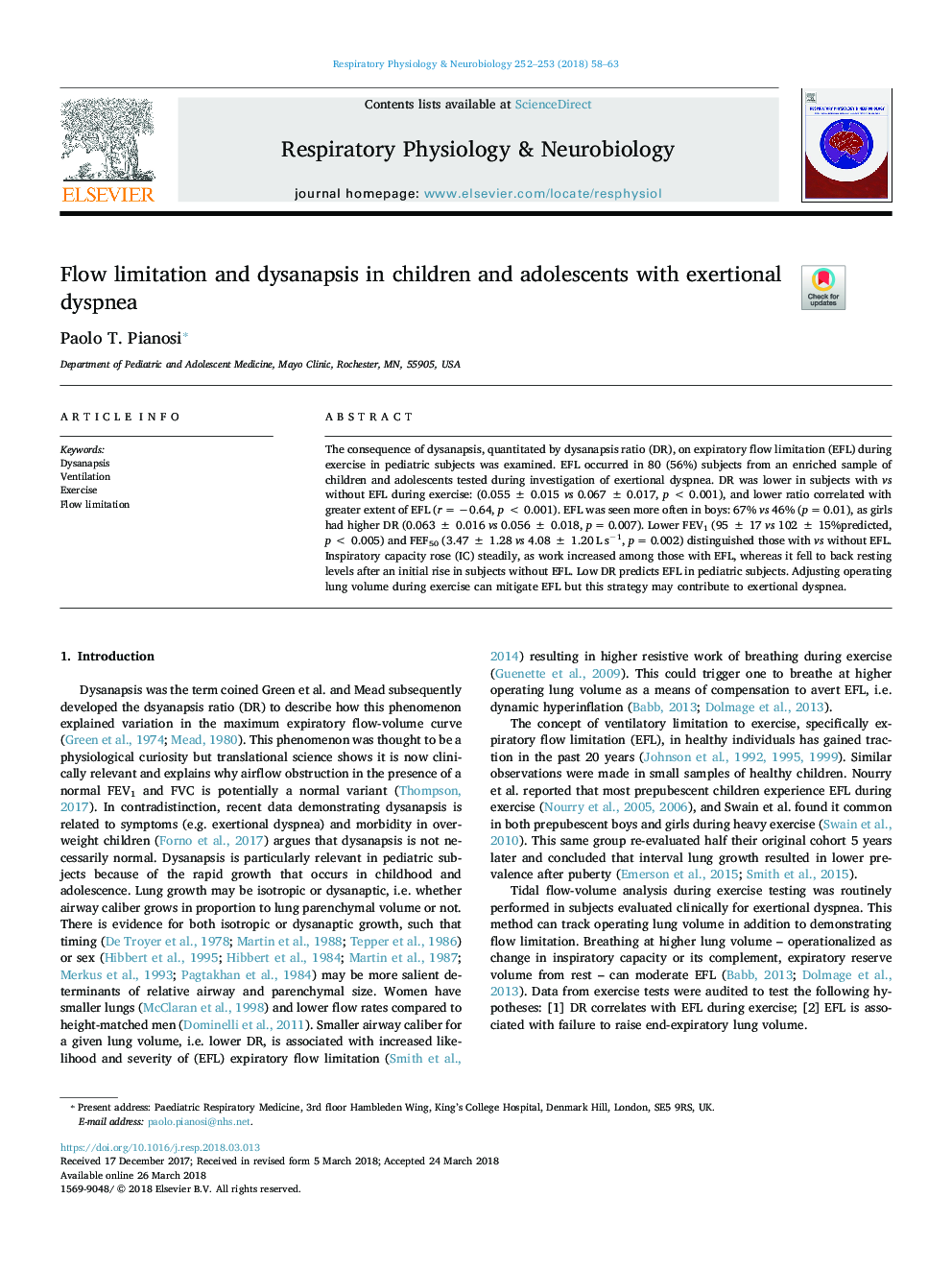| Article ID | Journal | Published Year | Pages | File Type |
|---|---|---|---|---|
| 8650799 | Respiratory Physiology & Neurobiology | 2018 | 6 Pages |
Abstract
The consequence of dysanapsis, quantitated by dysanapsis ratio (DR), on expiratory flow limitation (EFL) during exercise in pediatric subjects was examined. EFL occurred in 80 (56%) subjects from an enriched sample of children and adolescents tested during investigation of exertional dyspnea. DR was lower in subjects with vs without EFL during exercise: (0.055â¯Â±â¯0.015 vs 0.067â¯Â±â¯0.017, pâ¯<â¯0.001), and lower ratio correlated with greater extent of EFL (râ¯=â¯â0.64, pâ¯<â¯0.001). EFL was seen more often in boys: 67% vs 46% (pâ¯=â¯0.01), as girls had higher DR (0.063â¯Â±â¯0.016 vs 0.056â¯Â±â¯0.018, pâ¯=â¯0.007). Lower FEV1 (95â¯Â±â¯17 vs 102â¯Â±â¯15%predicted, pâ¯<â¯0.005) and FEF50 (3.47â¯Â±â¯1.28 vs 4.08â¯Â±â¯1.20â¯Lâ¯sâ1, pâ¯=â¯0.002) distinguished those with vs without EFL. Inspiratory capacity rose (IC) steadily, as work increased among those with EFL, whereas it fell to back resting levels after an initial rise in subjects without EFL. Low DR predicts EFL in pediatric subjects. Adjusting operating lung volume during exercise can mitigate EFL but this strategy may contribute to exertional dyspnea.
Keywords
Related Topics
Life Sciences
Biochemistry, Genetics and Molecular Biology
Physiology
Authors
Paolo T. Pianosi,
